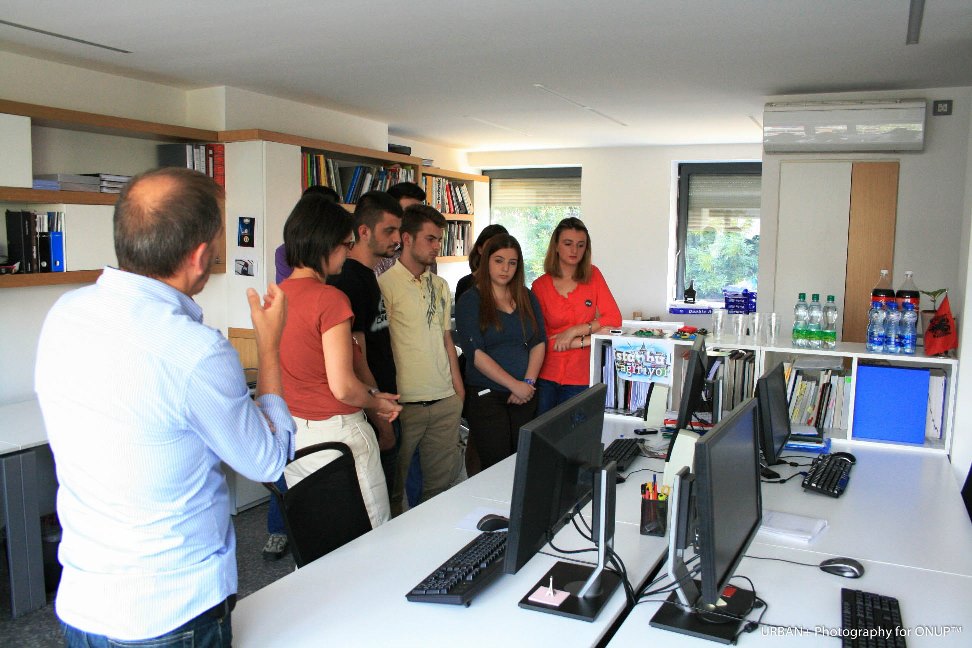
An EU home for Kosovars
Most of us might of noticed the cartoon-colored sidewalk concrete protectors on the narrow street by the Swiss Diamond Hotel, or the colored sidewalk across from the Prishtina`s newly built Cathedral, and wondered whether this street art was vandalism or legal art pieces. Fortunately, these art pieces were the winners of an EU-funded project called Culture for All. Managed by the European Union Office in Kosovo and implemented by ARS PROGETTI SpA (Italy) in July 2012, this competition called young artists and artists’ groups from all over Kosovo to participate in a visual arts prize competition for street art, mural paintings, applied arts, photography and/or installations in urban space. On September of 2012 the jury declared the winner artists, among which was Senat Haliti, an architect from the old city of Prizren who authored the “EU Pavilion”.
“The idea of making a structure someone could enter into, and be surrounded by, is a response to the need for an artwork that would transform a public space, energizing it. The EU Pavilion proposal is driven from the last stats regarding Kosovars` readiness to Join EU (72%). Pavilion is designed to be occupied, providing a quiet space for contemplation with the potential to encourage building trust between community” – tells ONUP the author.
“It is consisted of three elements: ground, space and structure. Roots and heritage are represented by the traditional carped interpreted on the ground while our European aspirations are represented by the structure itself. Based on “EU barcode” (AMO/Rem Koolhaas, 2001) EU member’s flags are layered and painted in recycled wood forming a house shaped space as most representative form of the “home”, a shelter for all. The colour richness is about differences and diversity as it stands also for harmony and beauty” – he adds.
“Space created in between the roots and structure is a place for contemplation. A place where people can reflect about the past and future. Most popular phrase in Albanian is “me hi n’BE” / “to get in EU”. The pavilion aims to become an “EU HOME” for Kosovars, place to give them the chance to ‘get in EU’ every day. Promotion of none motorized transport (bicycle) is part of the pavilion concept, too. The recycled wooden frame forms a shaded space delineating the boundary between the inside and outside of the structure. The base grounds the structure, and provides an informal seat. The three elements combined, create a bold, dynamic artwork, responding to and reflecting the vibrant energy that young Kosovars represent” – concludes Haliti.
Made out of wood (pine), with iron foundations and joints, this pavilion was completed in October of 2012 as a temporary structure and is planned to stay in the center of Prizren for at least a year. Aided by Margarita Azizi (Barch) and Sead Haliti (BSc Civil Eng), Haliti`s pavilion added to the city of Prizren a new vibrant palette of color, while on the other hand the politicians work on making real the Kosovars`dream of entering the European Union in a distant future.
Photos courtesy of Margarita Azizi.






